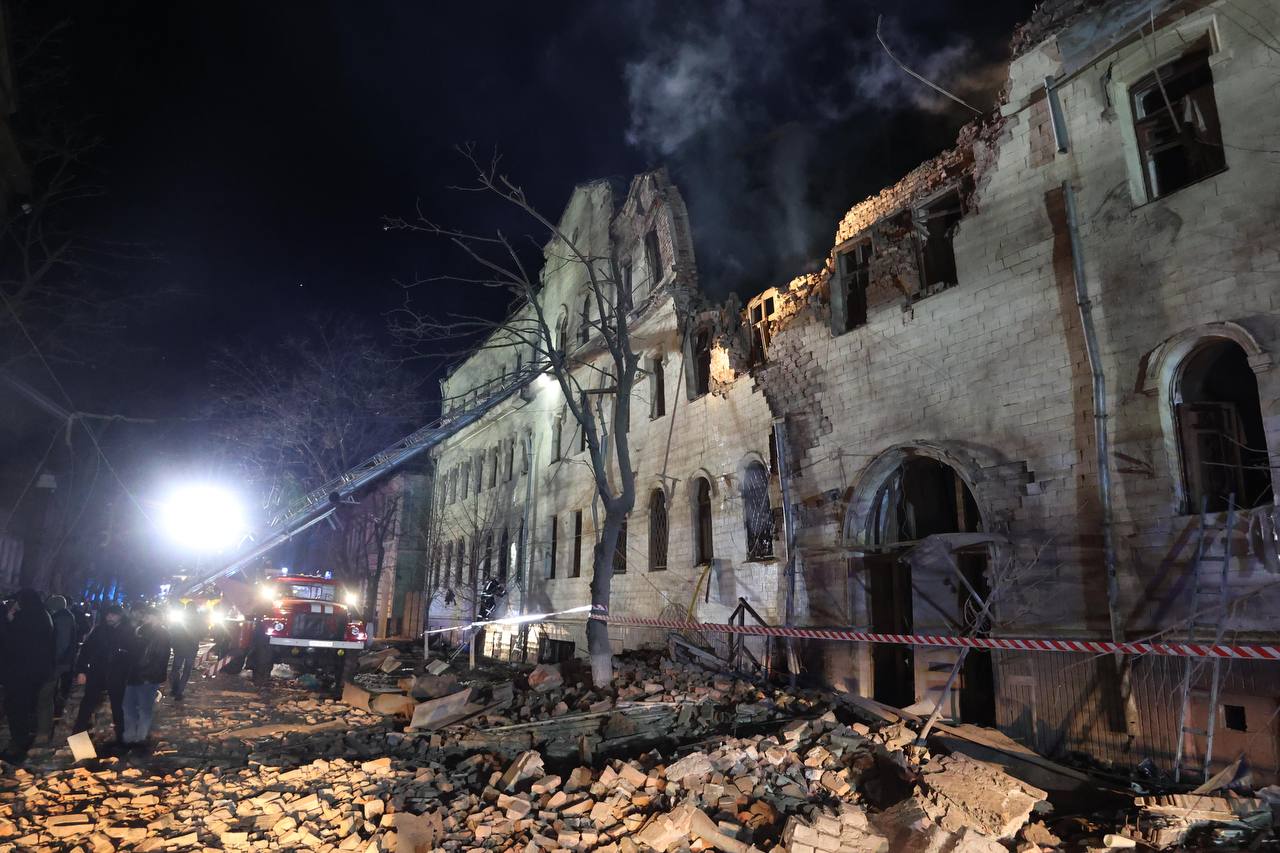Daily Flyer - January 17, 2024
A voice of Ukraine to the West

Putin attempts to destabilize Baltic countries
Russian President Vladimir Putin is laying out conditions for potential escalations in the Baltic countries as part of an alleged plan to weaken the NATO alliance, according to an assessment by the Institute for the Study of War (ISW) on January 16.
Reportedly, Putin stated on January 16, as per a Russian state-controlled media outlet, that Latvia and other Baltic countries were negatively impacting Russian security by "throwing Russians abroad."
Since September 2022, the Latvian government has modified its immigration law, requiring Russians residing in the country to adhere to the standard procedure for obtaining EU permanent residence status. One of the stipulations involves passing a Latvian language exam by November 2023.
Maira Roze, the head of the Latvian Office of Citizenship and Migration Affairs, revealed in a January interview on the Latvian LTV TV channel that at least 985 Russian citizens must be deported as they failed to apply for a new residence permit by the deadline.
The ISW emphasized Putin's broad interpretation of Russia's sovereignty and disregard for the sovereignty of former Soviet republics. Russia has consistently asserted the right to protect its "compatriots abroad," including ethnic Russians and Russian speakers beyond its borders.
While the ISW has not observed any immediate indication of a Russian attack on the Baltics, it suggests that Putin may be setting information conditions for potential future aggressive actions under the pretext of protecting "compatriots abroad."
The ISW noted that Putin's actions in 2022, particularly the invasion of Ukraine, were not driven by a direct threat from NATO but rather aimed at weakening and ultimately dismantling NATO. The Kremlin is allegedly engaging in information operations and hybrid warfare tactics to destabilize NATO, setting conditions for possible aggression against NATO members and their neighbors.

Russian attacks against Ukraine resulted in injuries to 23 people over the past 24 hours, as reported by regional authorities on January 17. Civilian casualties occurred in Odesa, Kharkiv, and Kherson Oblast.
In Odesa, a drone attack at approximately 2:15 a.m. local time injured three people and caused damage to residential buildings, according to Odesa Oblast Governor Oleh Kiper. A 62-year-old man, a 69-year-old woman, and a 29-year-old woman received medical attention, with 130 others evacuated from the damaged building.
Late on January 16 in Kharkiv, two Russian missile strikes injured 17 people and damaged a multi-story building, reported Kharkiv Oblast Governor Oleh Syniehubov. The explosions occurred around 9:40 p.m. in the city center, where there is no military infrastructure but residential buildings.
In Kherson Oblast, a Russian attack on the village of Tiahynka, located 40 kilometers east of Kherson, injured two people. Kherson Oblast Governor Oleksandr Prokudin stated that a 42-year-old woman and a 38-year-old were hospitalized with shrapnel injuries. Prokudin reported a total of three civilian injuries in the region from 75 attacks conducted by Russia in the past 24 hours, with the city of Kherson being fired at 36 times.
Belarus prepares new military doctrine allowing use of nuclear weapons
Belarusian Defense Minister Viktor Khrenin is set to present a new proposed military doctrine to the government, allowing for the potential use of nuclear weapons, as reported by the Belarusian state news agency BelTA on January 16.
In May 2023, Russian Defense Minister Sergei Shoigu and his Belarusian counterpart Khrenin signed an agreement for the transfer of tactical nuclear weapons to Belarus. Russian leader Vladimir Putin mentioned that this process had commenced in June, and Belarusian leader Alexander Lukashenko later stated in December that the transfer had been completed.
The specifics of how many tactical nuclear weapons Belarus possesses and the details of the proposed doctrine remain unknown. Tactical nuclear weapons, designed for battlefield use, have a range of up to 500 kilometers if launched by land and up to 600 kilometers if launched by air or sea, according to the Nuclear Threat Initiative think tank.
Belarusian Security Council Secretary Alexander Volfovich stated that the change in doctrine was in response to perceived aggression from Poland. He noted, "Unfortunately, statements by our neighbors, in particular Poland... forced us to strengthen."
Despite potential concerns over the deployment of such weapons in Belarus, the White House, shortly after the May announcement, stated that it had not altered its nuclear threat assessment. White House press secretary Karine Jean-Pierre mentioned, "We have not seen any reason to adjust our own nuclear posture... nor any indications Russia is preparing to use nuclear weapons for Belarus."
Ukraine downed 19 of 20 Russian attack drones launched overnight
Ukrainian forces successfully intercepted and shot down 19 out of the 20 Shahed-type attack drones launched by Russia overnight, as reported by the Air Force on January 17.
According to the Air Force statement, the drones were launched from Primorsko-Akhtarsk in southern Russia, situated off the coast of the Sea of Azov. Air defense operations were conducted in Zaporizhzhia, Mykolaiv, Odesa, Dnipropetrovsk, and Kirovohrad oblasts.
The Southern Operational Command of Ukraine reported that air defense units were active for nearly three hours overnight. One drone was intercepted above Mykolaiv Oblast and another above Kirovohrad Oblast.
The primary target for the drones was Odesa, approaching the city from a low altitude over the surface of the Black Sea, as stated by the Southern Operational Command. Of the 20 launched, 11 drones were shot down on their approach to the coast, with the "vast majority" falling into the sea.
Debris from several downed drones caused damage to shops, cars, and apartments, resulting in injuries to three people. The successful interception demonstrates Ukraine's capability to defend against aerial threats, particularly in the specified regions facing drone attacks.

